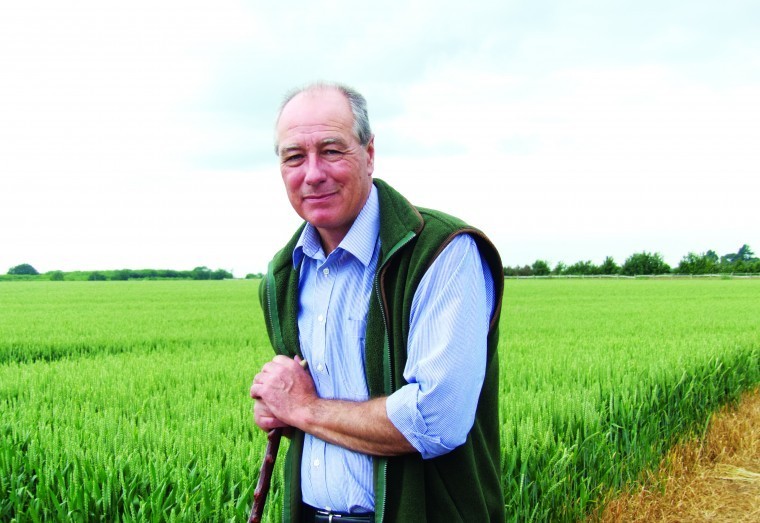This has been a harvest of two halves with oilseed harvest completed all dry off the combine and with an overall average yield of 3.95 tonnes a hectare based on acres drilled last summer.
That includes some fields which largely failed and we did not redrill or were sprayed off for blackgrass. Of the varieties Campus, Elgar and DK Imperial, there was little to discern between them yield wise with soils and location being the more determining factors.
What fun the rest of harvest has been and there is still some way to go. As I write we are two thirds of the way through 2,500 acres of wheat and we have had one day when moistures fell below 15%.
I would say on average we have either a wet oilseed rape harvest or a wet wheat harvest – very rarely both wet or both dry – and this year it really has been a wet wheat harvest. It is the version that I really detest as it is hard work with the tonnage to be dealt with putting pressure on combines, stores, dryers and staff.
To put that in context all of our farms had 26 millimetres of rain in the first four days of August and reached 60mm by the end of the second week. The odd location such as Wye was substantially more where isolated thunder storms occurred. Strong winds accompanied the heavy rain and this has tested the standing ability of crops to the limit and beyond with a lot of lodged wheat crops across our farms. As we have slowly combined these crops what is apparent is that yields were exceptional and still are for the late lodging crops: there is just no quality left in them.
Where crops stood against the worst the elements could throw at them the yields are lighter, often on light chalk soils, where the long forgotten spring drought really did damage before the rains arrived. Even with those crops the hagberg numbers have fallen away. The early start is a distant memory and without a settled spell of weather we may yet finish as a late harvest and certainly it will be a prolonged harvest.
So to those moisture adjusted yields where we have cut and weighed crops. Of the first wheats cut so far, we have Siskin and Zulu at 10.7t/ha with one exceptional field of Zulu at 12.8t /ha and old stalwart Claire at 10.1 t/ha. Second wheat was all Relay and there we did have serious variability across fields ranging from 7.5t/ha to 9.8t/ha but with an overall average of 8.5t/ha. Perhaps because of the lower yields it has stood rather better and most of it has maintained a good hagberg for what that is worth in a hard feed wheat.
We have also cut the spring barley in a brief dry spell mainly because it was brackling badly in the rough weather. Varieties were Irina and Propino and it was very noticeable that the Irina stood better and had far less brackling evident. Yields averaged out at an outstanding 7.9t/ha with Irina outperforming Propino by a significant margin. Nitrogens were 1.9 and hagberg falling number and specific weight both good. One can only say that it has been a very good year for the crop – not that I liked growing it, and without blackgrass control issues would not be bothering.
To date we have not got as far as cutting any beans as the focus has been on finishing wheat and getting it in a store somewhere to dry it when we get to it and we still have a way to go in achieving that. While we are under 800 acres of wheat left that still looks to be a task or perhaps I am just getting older when faced with these small challenges.
I have been disappointed with the lodging in our crops as there is no future in growing lodged wheat. It has been some years since we learned that lesson and I really did not need a refresher. Clearly we are growing some varieties that have lower standing power ratings on the recommended lists and that seems to run with the improved yield ratings so it may just be something we have to manage.
We are tending to drill higher seed rates to compete with blackgrass which is never going to enhance standing ability in crops. That said if we are to continue to attack blackgrass with everything we have available then we are not going to lower seed rates so the knowledge is of limited use. This year saw the locking up of available nitrogen fertiliser by the spring drought which was released when the rains did arrive causing a flush of growth when growth regulators had run out of steam or simply not been applied due to drought stress.
That is a matter of learning by experience and we will need to bear that in mind if we see similar weather conditions again. But overall I suspect we are going to use more growth regulators and concentrate on specific crop growth timings even if they do not fit with traditional fungicide timings to the point where we may be making separate growth regulator applications.
That said the weather is the main factor. We are unlikely to get two years the same and by the time we do see this weather pattern again we will either have forgotten about it or in my case, with luck, may well have retired.




